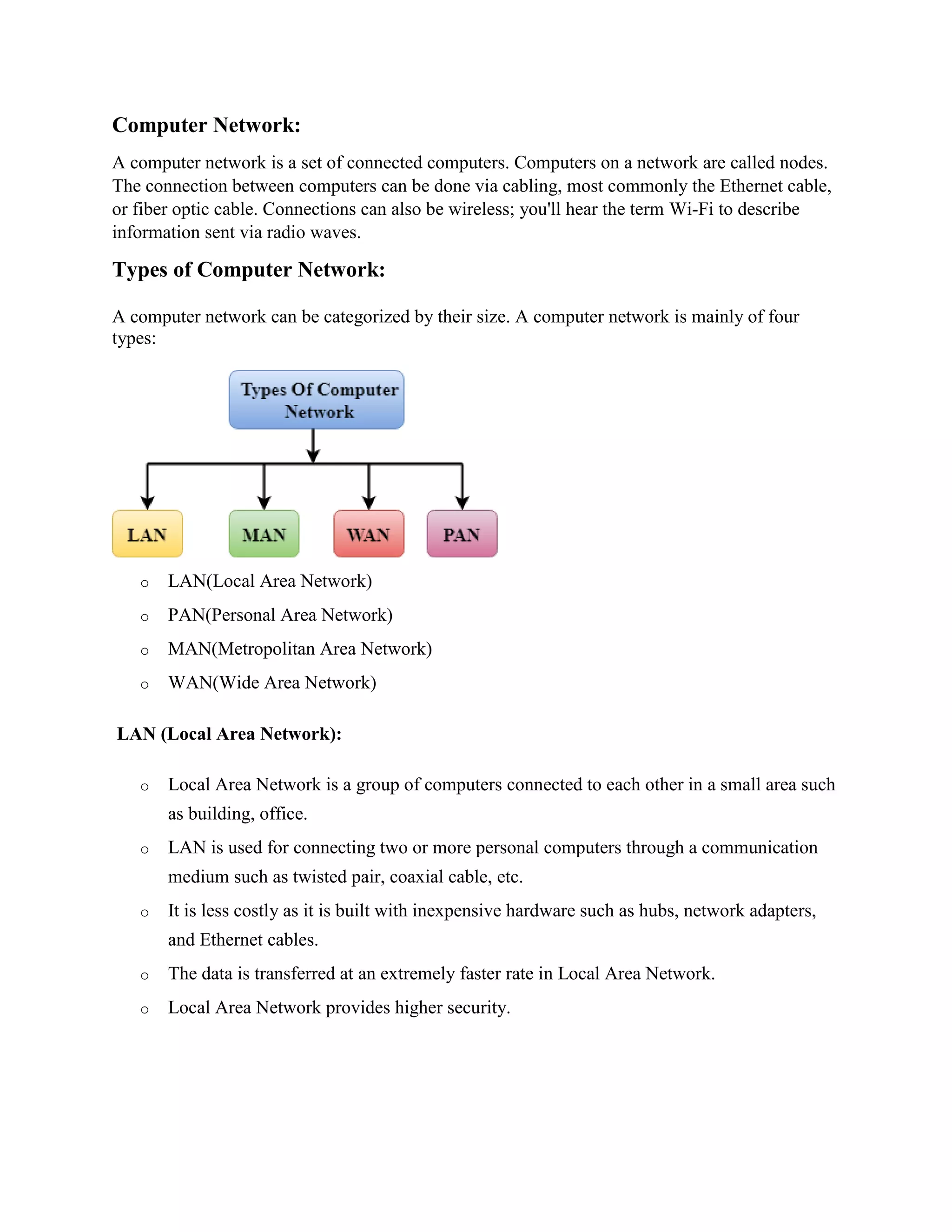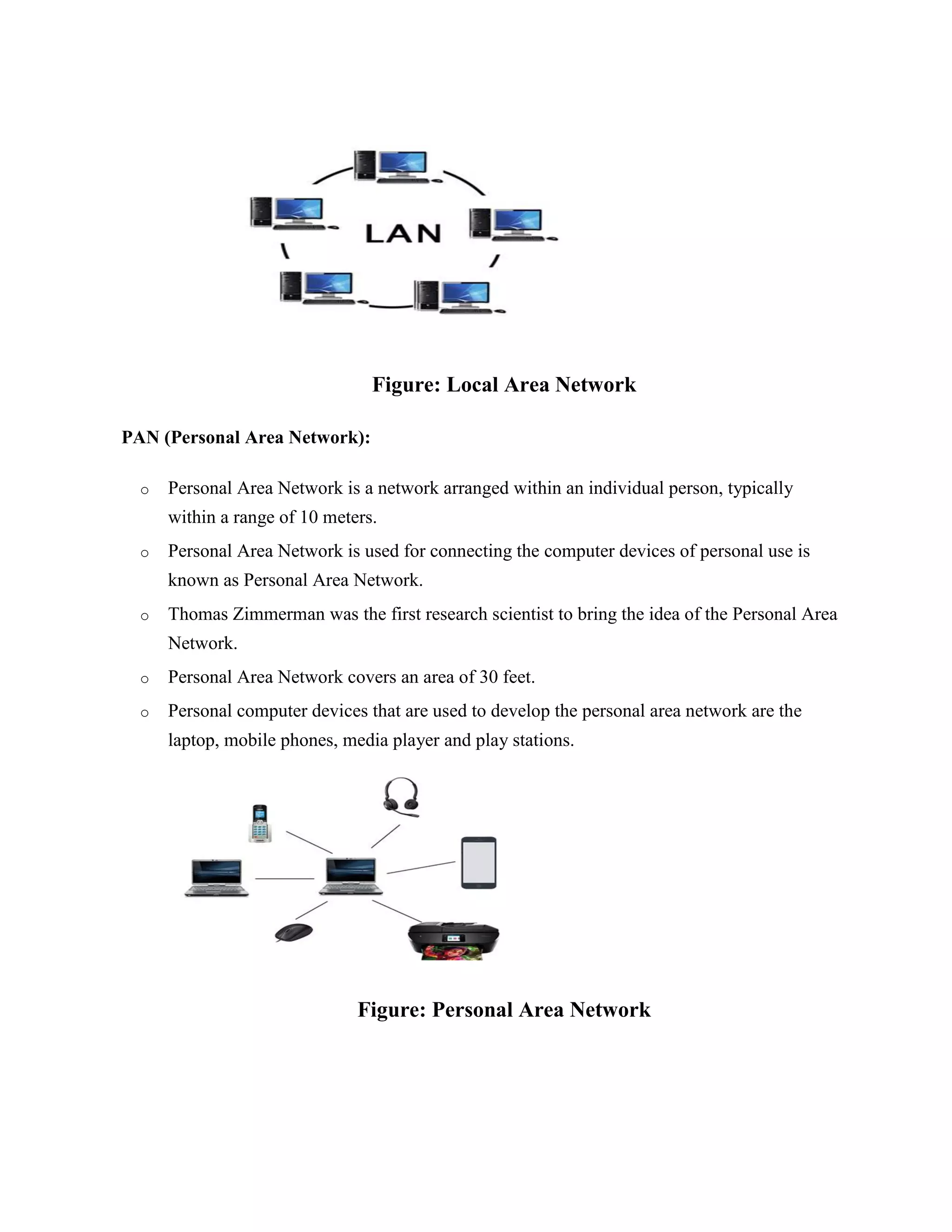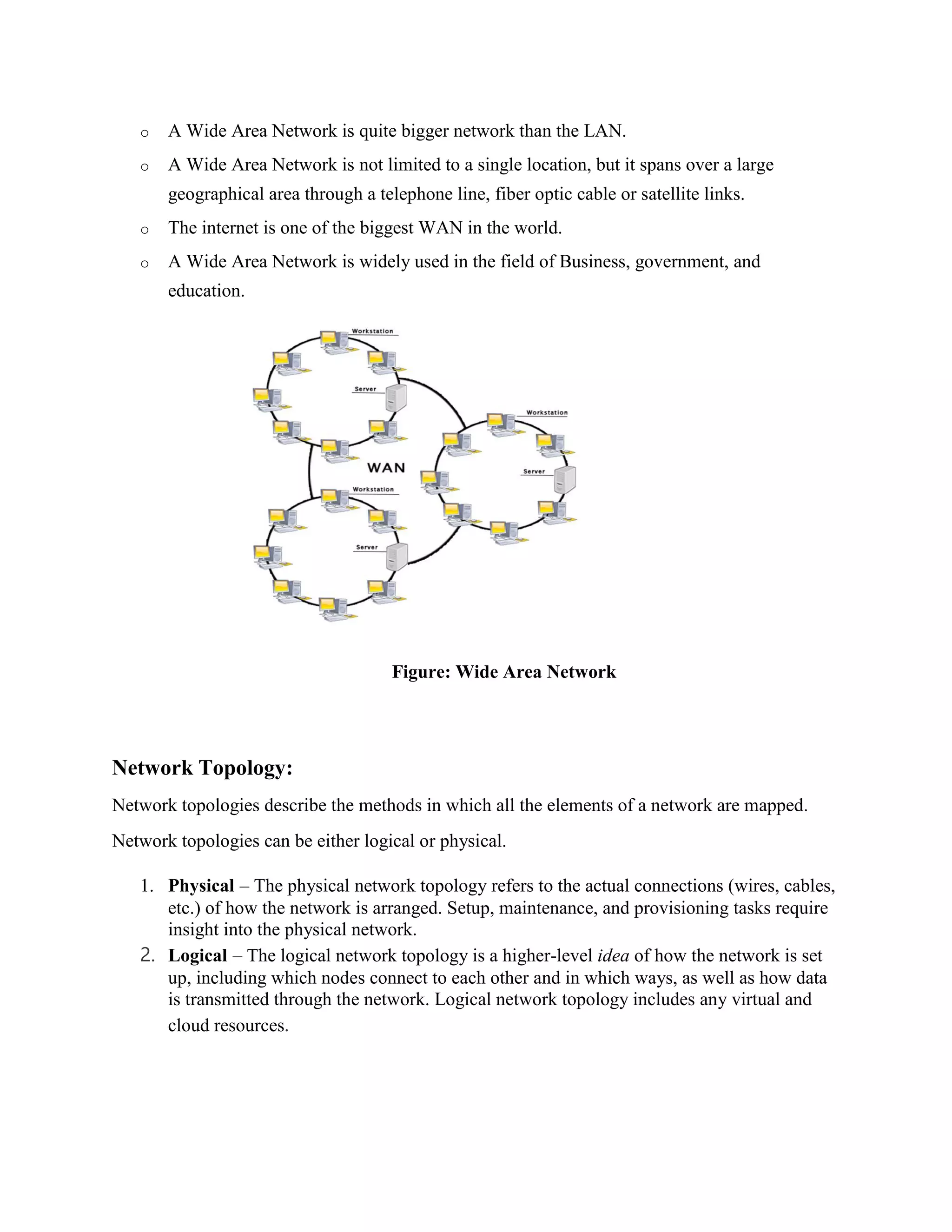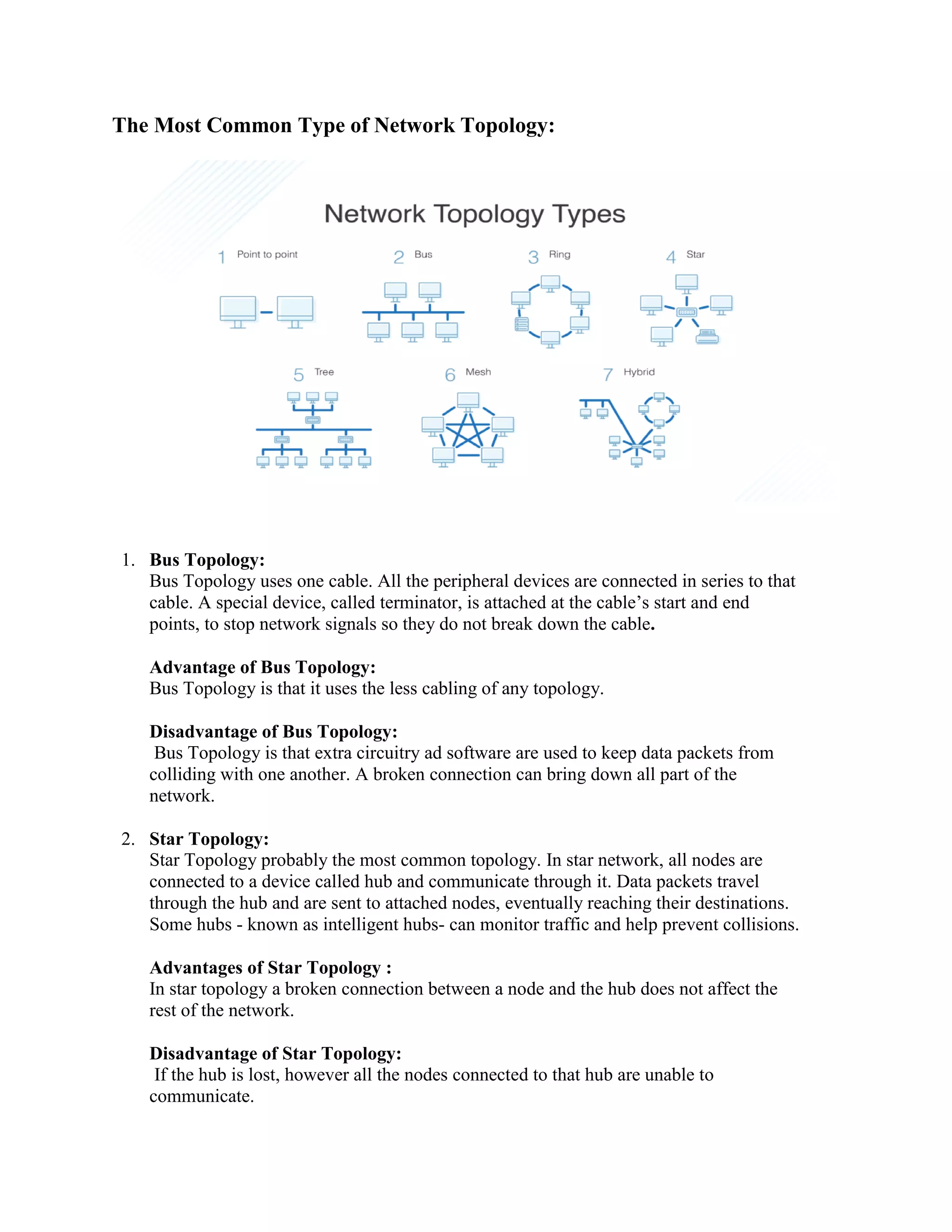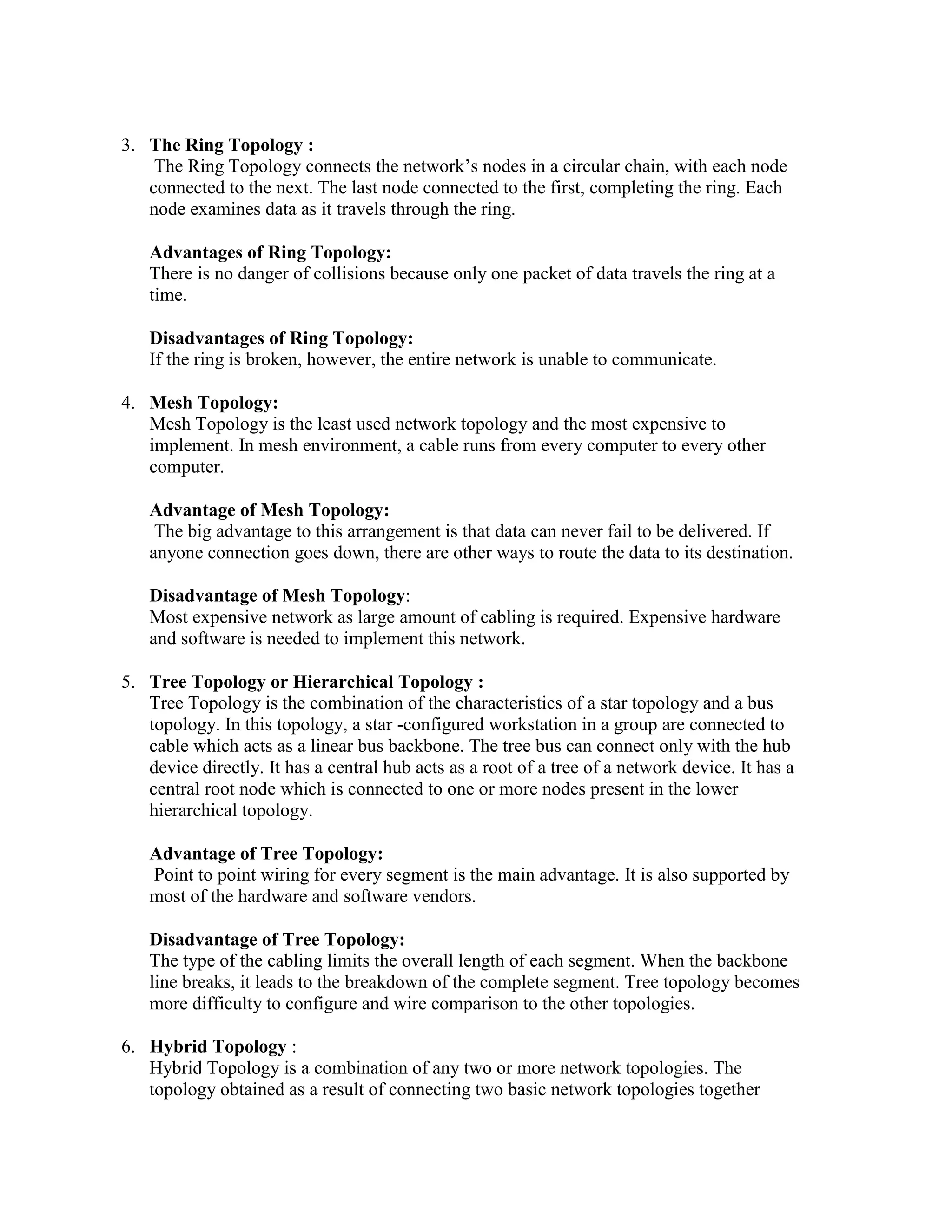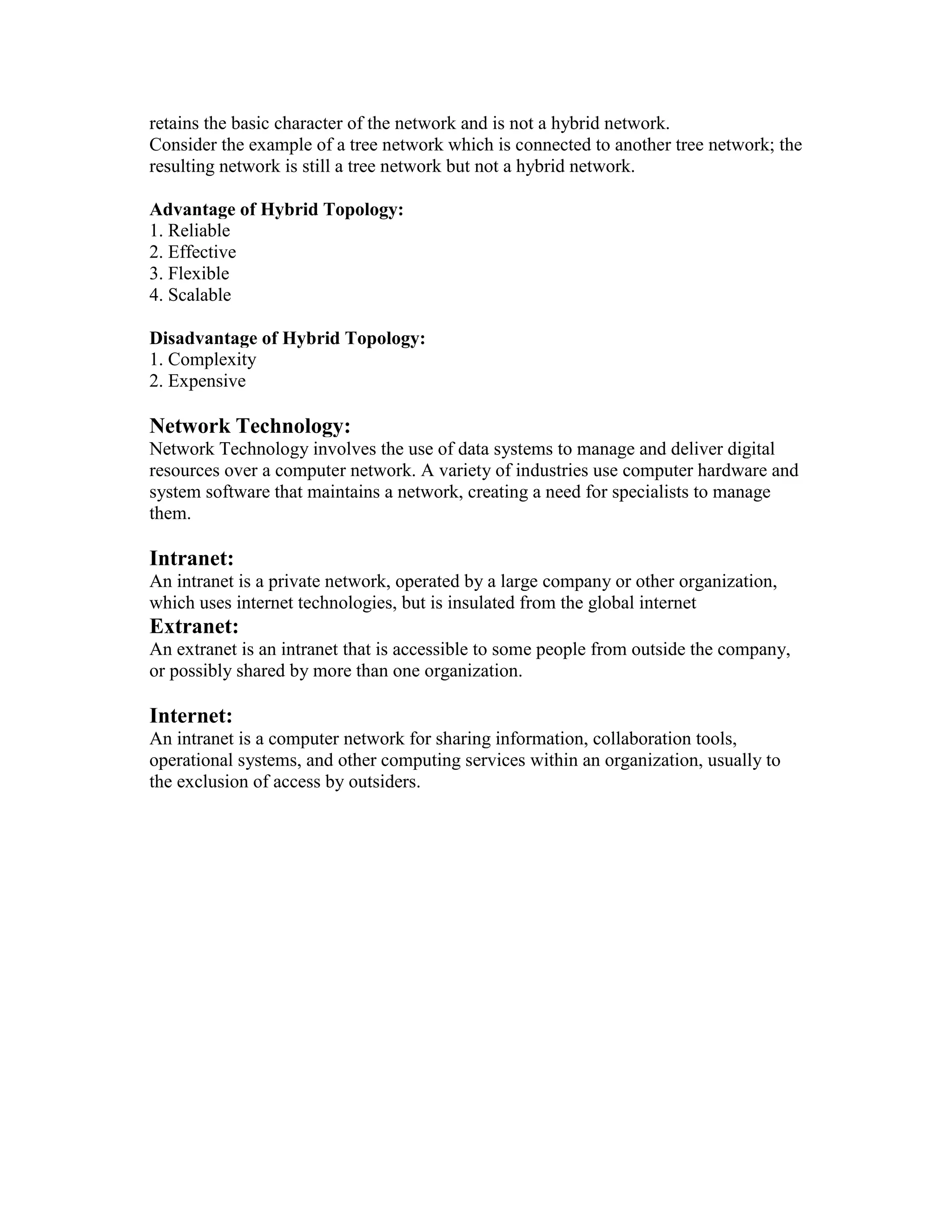This document provides an overview of computer network types and topologies. It discusses the four main types of networks: local area networks (LANs), personal area networks (PANs), metropolitan area networks (MANs), and wide area networks (WANs). Each network type is defined based on its size and scope. The document also examines common network topologies like bus, star, ring, mesh, tree, and hybrid along with their advantages and disadvantages. Finally, it briefly introduces some network technologies including intranets, extranets, and the internet.

